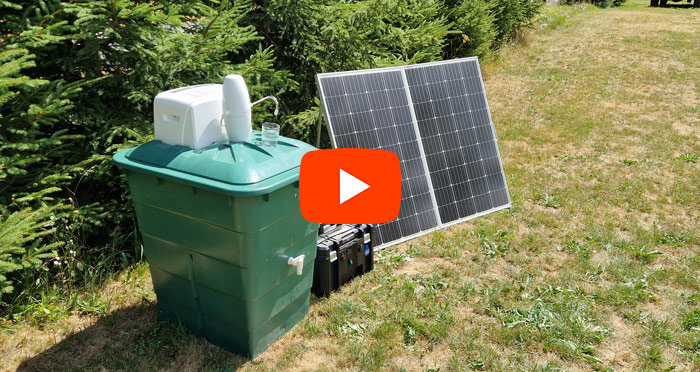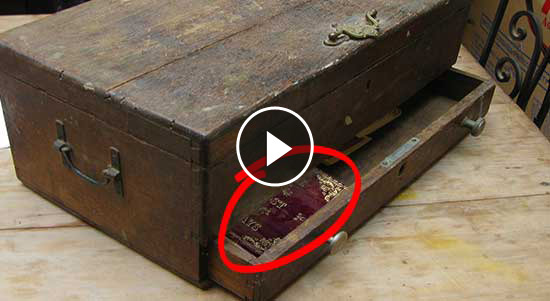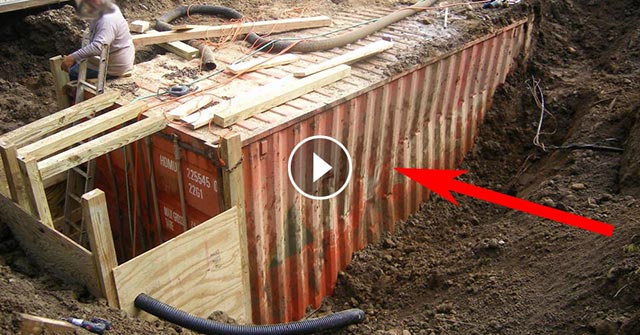Click Here To Join Our Telegram Channel for FREE daily tutorials!
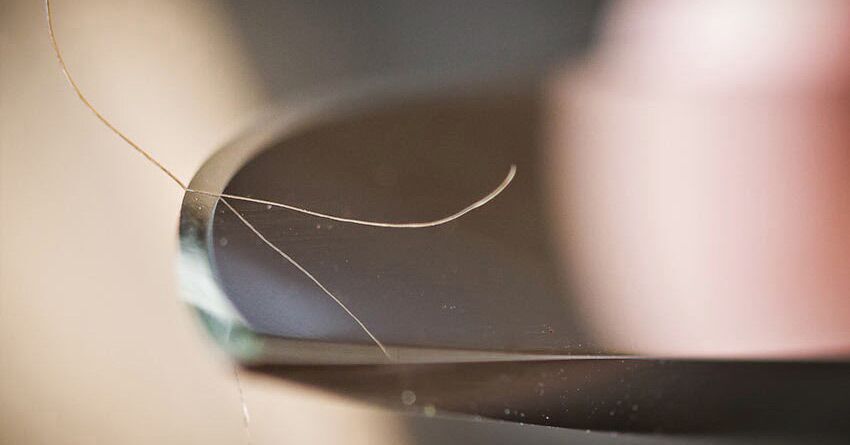
DISCLAIMER: I ask that you read the entire article and keep in mind that this is one of those discussions that rank up there with talking about religion and politics. And please, let the results speak for themselves.
I don’t claim to know everything there is to know about sharpening. It’s a lifelong journey and one that I feel isn’t perfected overnight. However, I will say that “shaving sharp” is only the beginning of the sharpness that can be obtained, a lot like how obtaining a black belt is only the beginning of learning in martial arts. I hope to get those that don’t already know, to that “beginning” point, where after I feel that they’ll continue to learn and grow.
First, before you go tearing off and grab your favorite knife to start, I’d like to mention four reasons why people fail at sharpening.
1. They start off with a knife that is EXTREMELY dull to learn on.
2. They don’t see progress and change their technique.
3. They progress too soon from a coarser to a finer medium, or start out on too fine a medium.
4. They have too steep of a sharpening angle.
Common Mistakes
Failure 1: Starting off with a knife that is EXTREMELY dull to learn on.
I suggest starting on a knife that you may actually think is sharp, even a new knife or one that is barely used. If you can’t do that, try having someone sharpen it who knows how to sharpen and then use your sharpening skills to maintain that edge just as soon as it looses it cutting ability. Even most new knives don’t have a truly sharp edge. By training and learning your skills on a fairly sharp knife, you make it easier on yourself because you’ll be able to see progress much quicker. You’ll also be able to tell what’s working and what’s not. Every time that edge starts to get a little dull, take it straight to your stone and put in a few minutes getting back that edge. It’ll be much less frustrating than spending an hour or more whaling away at a very dull knife, unable to see any progress.
Failure 2: Not seeing progress and changing technique.
This happens when you’re trying to learn how to sharpen and you start with a knife that should’ve been sharpened years ago. You start sharpening and you don’t see any change in the dullness or sharpness of the knife, so you try something else, which also fails to bring an edge within five or ten minutes, so you try something else – all without making any real progress in the long run. I consider myself proficient at sharpening, but even I don’t try restoring an edge by hand that’s extremely bad unless I have no other choice. Even then, sometimes it’s best to take a break if you haven’t established an edge and are getting tired. Then come back and keep working, using the same angle you had before until you get the edge you were working for. If you’re working with a hard steel and extremely worn edge, sometimes it can take well over thirty minutes of sharpening by hand just to establish an edge.
Failure 3: Progressing too soon to a finer medium or start out on too fine a medium.
Sharpening is no different than sanding wood. If you need to move a lot of material, it’s best to start out with a coarse grit and not move to a finer grit until you’ve removed all the steel you need to with the coarser grit. Learning the different grits like Japanese, CAM or Microns is an entire article in itself. I use a 1000 Japanese water stone for my coarse stone, which is equivalent to a 700 Grit or 14 Microns. This will produce a shaving sharp edge with practice, yet is still coarse enough to remove plenty of steel. However, if I were using sandpaper instead, I would start with 80 or 120 grit, which makes it very easy to move a lot of steel.
Failure 4: Using too steep of an angle.
There are several different factors that determine the proper angle to sharpen:
• The purpose you’re using the knife for. Heavy cutting or light slicing?
• The quality of the steel you are working with. Can it hold a steep edge?
• Personal preference.
I prefer to hold a shallower angle on my knives than most, which sacrifices some of the edge retention or longevity of the edge for cutting performance. That being said, in defense of my position, I try to use my knifes for cutting, not plowing my way through things. I’ll discuss what angle you should sharpen your knives at next.
Read Full Article HERE
By Patrick Roehrman
Image For Pinterest:
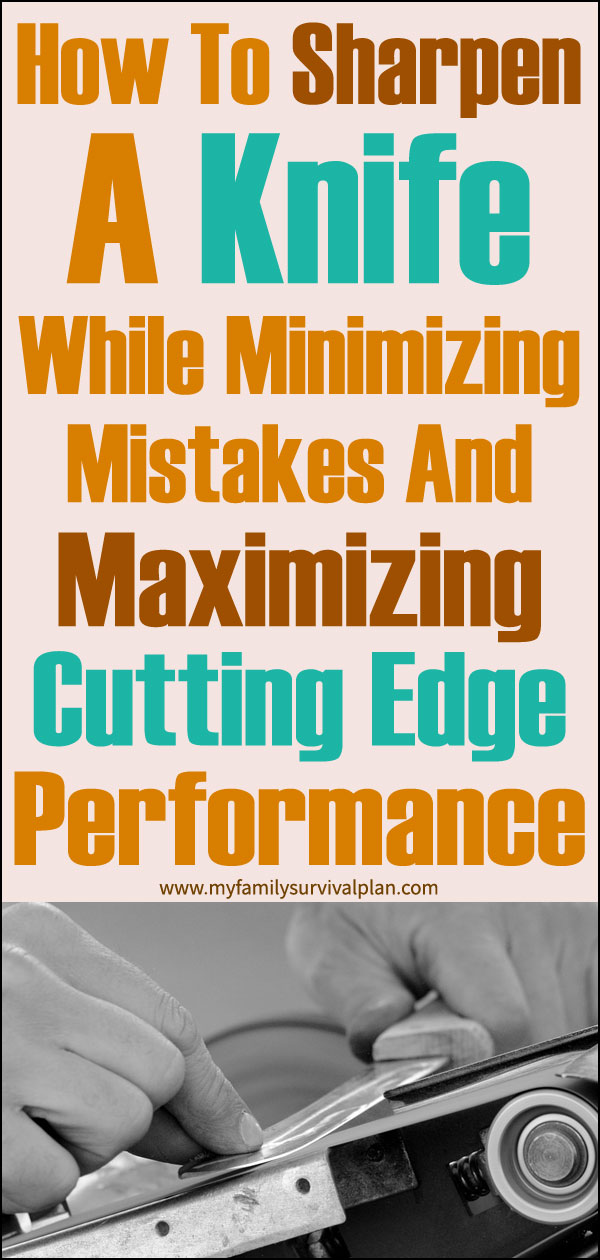
Graphic – www.myfamilysurvivalplan.com. Image – Pixabay (PD)
This Crazy Off Grid Device Literally Makes Drinkable Water From Fresh Air:
According to NASA, the U.S. is expecting a 100-YEAR LONG MEGADROUGHT.
It's already begun. Ask the farmers in California. They know.
Every survivalist knows that water is of critical importance. You NEED an independent water source that you can count on!
As an interesting "survival rehearsal" - imagine that you turned the tap on right now and nothing came out. How long would you last?
But what if there was another water source literally hidden in plain sight. That's right, I'm talking about the atmosphere!
The amazing thing about getting water from the natural moisture in the air... is that it is ALWAYS available.
This gives you real water security!
Learn more about how to tap into "Nature's secret water reservoir" and stay hydrated when TSHTF!
Watch the video:
😳 What Tinnitus Does To Your Brain Cells (And How To Stop It)
After 47 years of studies and countless brain scans done on more than 2,400 tinnitus patients, scientists at the MIT Institute found that in a shocking 96% of cases, tinnitus was actually shrinking their brain cells.
As it turns out, tinnitus and brain health are strongly linked.
Even more interesting: The reason why top army officials are not deaf after decades of hearing machine guns, bombs going off and helicopter noises…
Is because they are using something called "the wire method", a simple protocol inspired by a classified surgery on deaf people from the 1950s...

I Can't Help Showing This Off:
If you haven't heard of Claude Davis yet do yourself a huge favor and watch this video.
One of the smartest guys I ever had the pleasure of meeting, Claude set-up a unique prepping system that changed his life forever.
I already tried it myself and let me tell... you I was completely blown away... His surprising tactics could make your life easier and give you the peace of mind you deserve.
Don't just take my word for it... watch his short video and decide for yourself.

Most People Don't Have The Guts To Try This:
An amazing discovery in an abandoned house in Austin, Texas: A lost book of amazing survival knowledge, believed to have been long vanished to history, has been found in a dusty drawer in the house which belonged to a guy named Claude Davis.
Remember... back in those days, there was no electricity... no refrigerators... no law enforcement... and certainly no grocery store or supermarkets... Some of these exceptional skills are hundreds of years of old and they were learned the hard way by the early pioneers.
>> Click here to find out about them now
We've lost to history so much survival knowledge that we've become clueless compared to what our great grandfathers did or built on a daily basis to sustain their families.
Neighbors said that for the last couple of years Claude has tried to unearth and learn the forgotten ways of our great-grandparents and claimed to have found a secret of gargantuan proportions. A secret that he is about to reveal together with 3 old teachings that will change everything you think you know about preparedness:
>>> Click Here To Watch His Short Video <<<

More Off-Grid And Survival Resources:

What REALLY Happens When You Bury a Shipping Container? (Hint: It's A Bit Crazy...)
Shipping containers are all the rage - but if you are thinking about buying one, you MUST watch this video first:
There's a general belief that if you bury a shipping container you can create an awesome root cellar / storm shelter / survival bunker.
But is a shipping container strong enough to handle the pressure?
Watch the video to see what happens:
What Really Happens When You Bury a Shipping Container? (Click To Watch Video)


